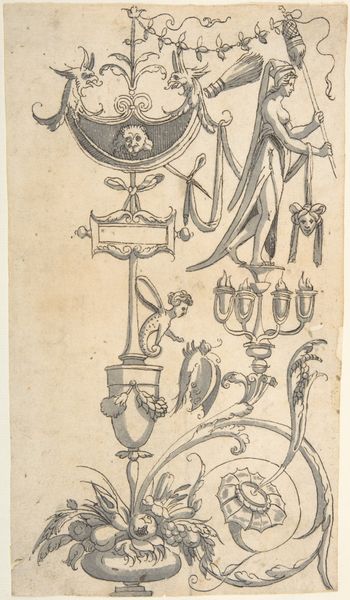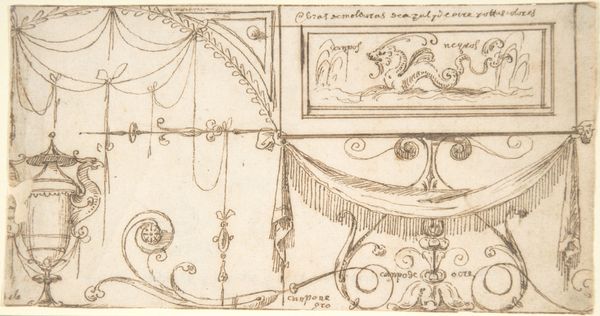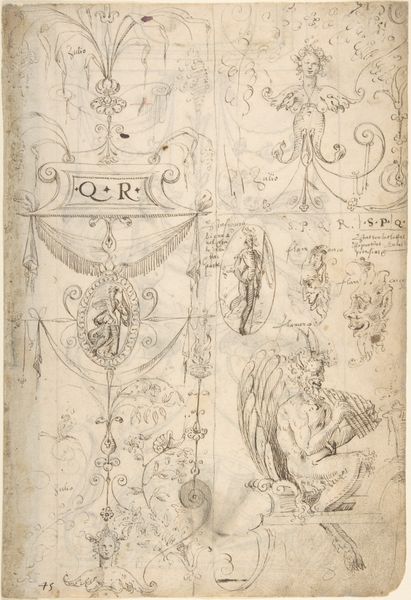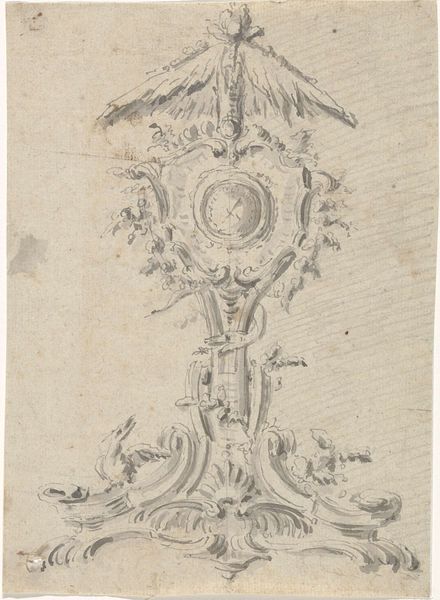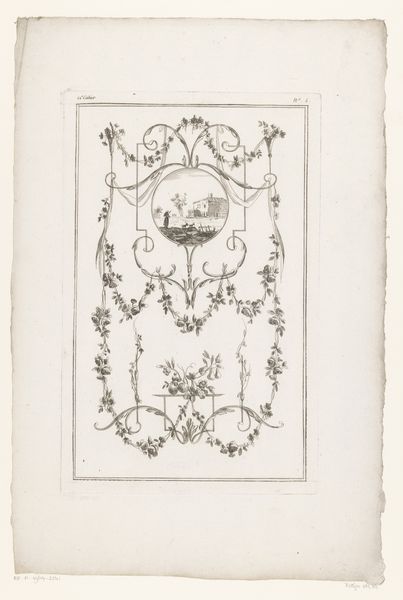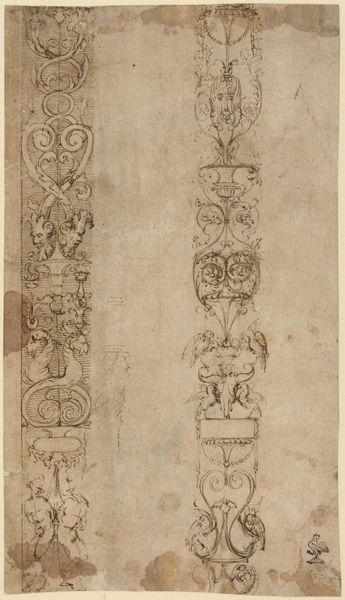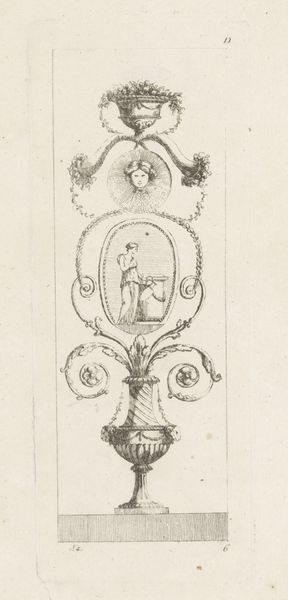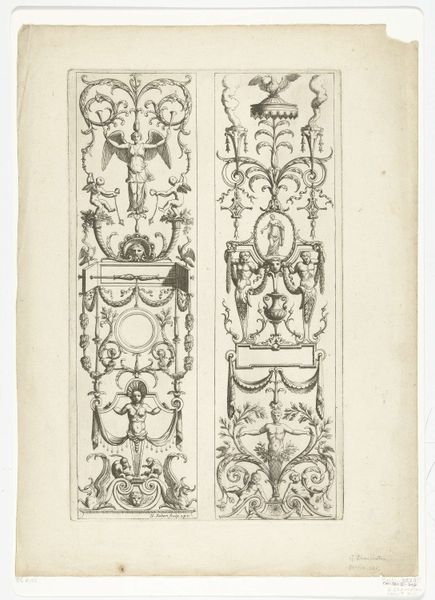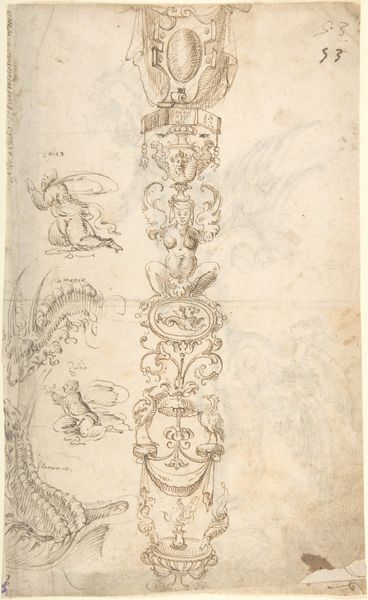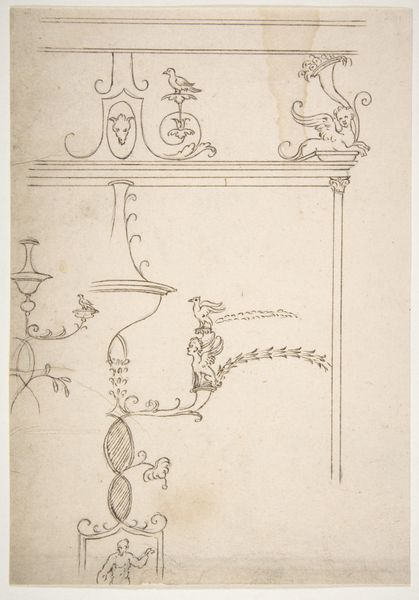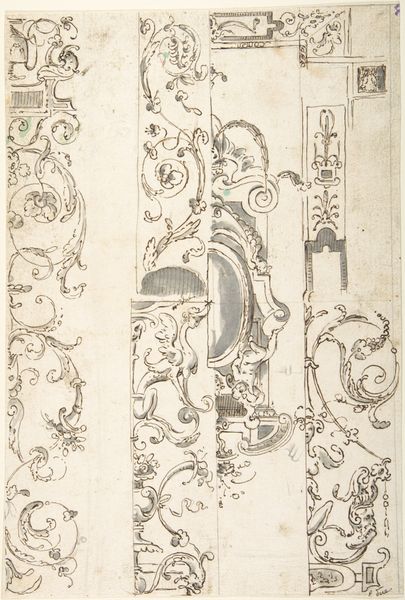
Domus Aurea, unidentified, grotteschi, details (recto) blank (verso) 1500 - 1560
0:00
0:00
drawing, ink
#
drawing
#
ink drawing
#
figuration
#
11_renaissance
#
ink
#
geometric
#
decorative-art
#
italian-renaissance
Dimensions: sheet: 8 5/16 x 2 7/16 in. (21.1 x 6.2 cm)
Copyright: Public Domain
Curator: At first glance, this ink drawing feels rather dreamlike. Its pale, ethereal lines hint at something delicate, yet slightly grotesque. Editor: Indeed. What we have here is a sheet of studies made between 1500 and 1560, intended as grotteschi details for the Domus Aurea. It’s by an anonymous artist and is currently held at the Metropolitan Museum of Art. It showcases decorative elements. Grotesque, of course, meaning, in Renaissance terms, not ugly but rather a playful mix of human, animal, and vegetal forms. Curator: That certainly chimes with what I am seeing. A playful, fluid energy expressed through these whimsical shapes and almost architectural fragments. Do you find it significant that it's attributed to an anonymous creator? Does the absence of a known artist perhaps shift our understanding? Editor: In a way, yes. It allows us to move away from a cult of personality and focus instead on the collective creative energies and cultural aesthetics prevalent at the time. One might consider that these are not so much singular artworks but records of a wider cultural conversation, reflecting and shaping Renaissance sensibilities about beauty, the body, and the classical past. What does it suggest to you, artistically? Curator: The emphasis on line is striking, almost calligraphic in its quality. Note how each flourish and curve is rendered with such precision and control; these delicate, floating shapes make me think about the transience and artificiality of the decoration itself. The swan eating the plant looks very mannerist, with a stylized elegance. Editor: It is almost like observing the very grammar of ornamentation. Consider the impact of such designs. The rediscovery of classical motifs deeply affected Renaissance art and this piece testifies to the creative energy unleashed at the time. In its fusion of human, animal, and plant-like forms, there's perhaps a silent rebellion against established, static categories. It questions how art could liberate itself and influence the culture. Curator: Yes, a visual language that speaks volumes. Overall, the image appears weightless—ethereal forms seemingly suspended in air. And from that airy lightness also emerges the cultural underpinnings and complexities of the work itself. Editor: Ultimately, a conversation starter.
Comments
No comments
Be the first to comment and join the conversation on the ultimate creative platform.
